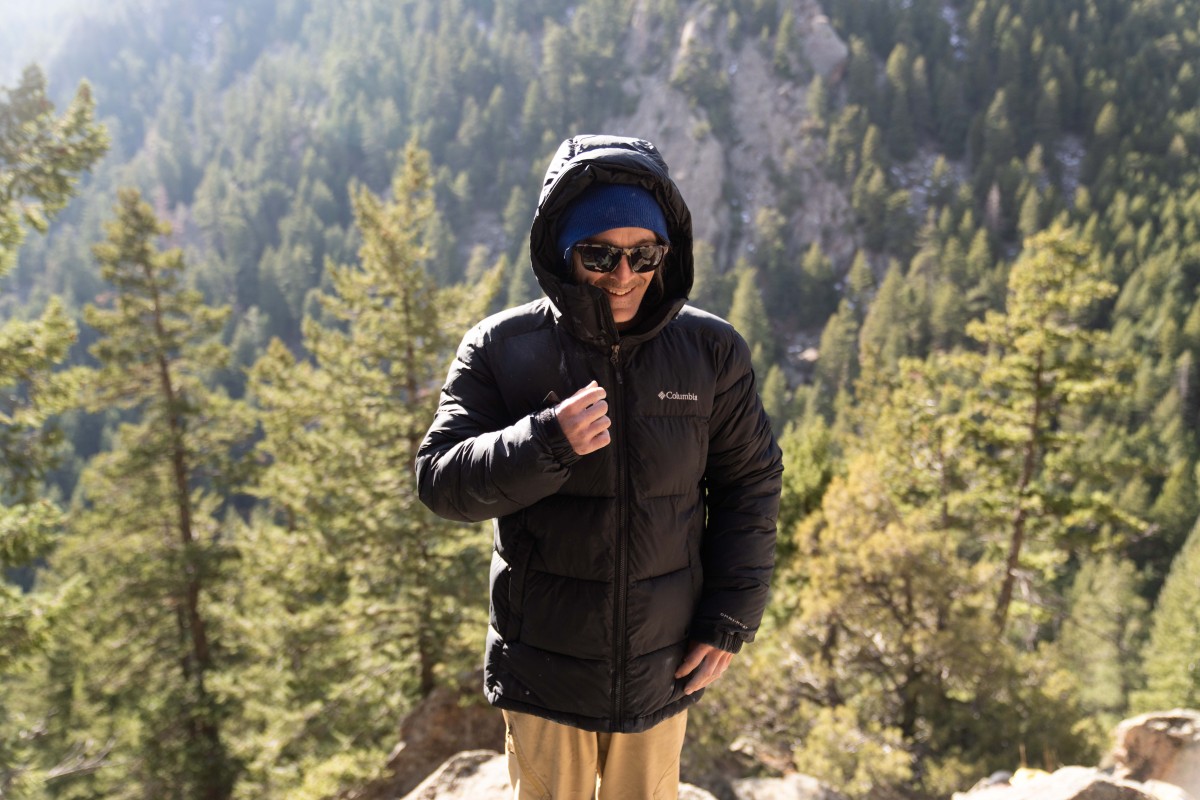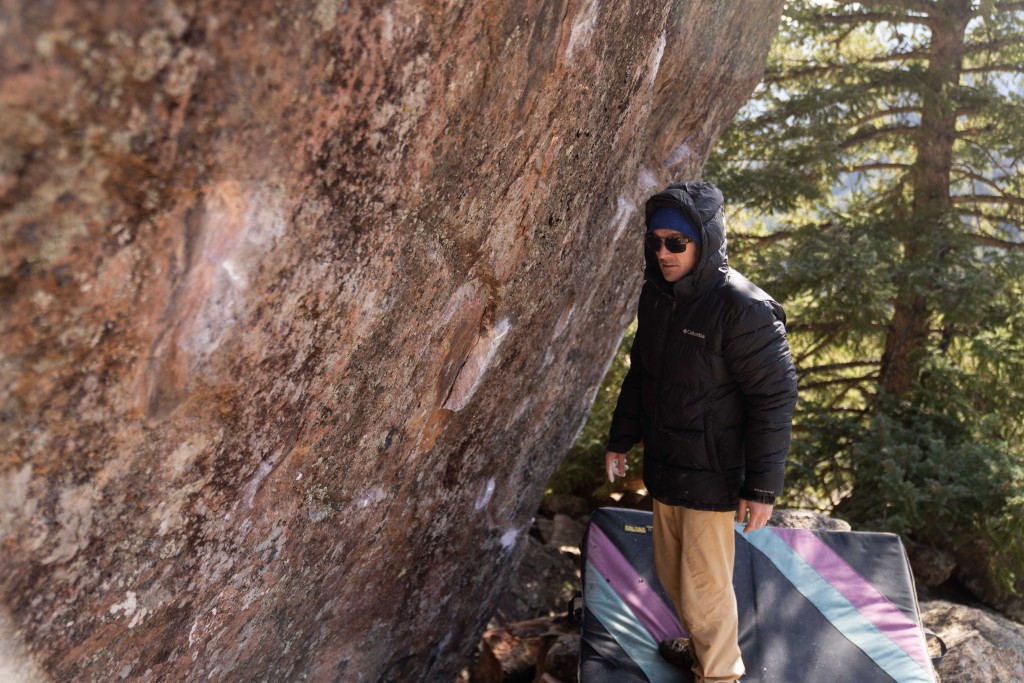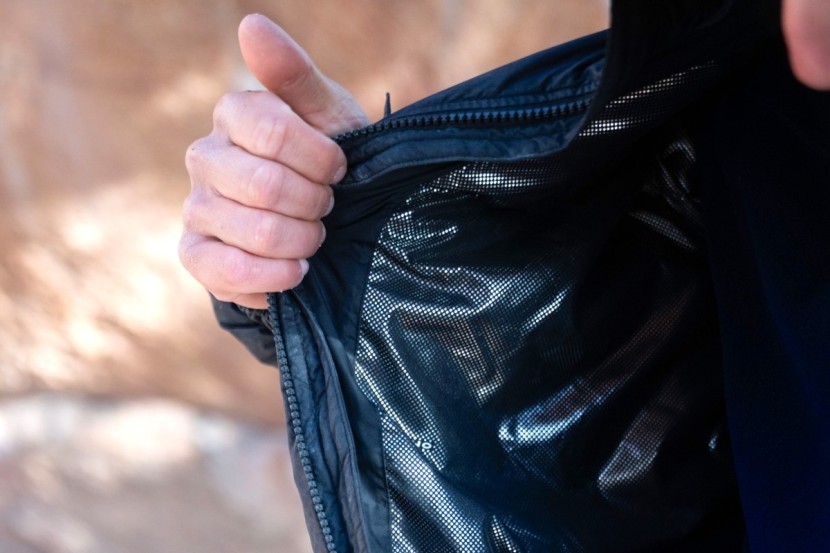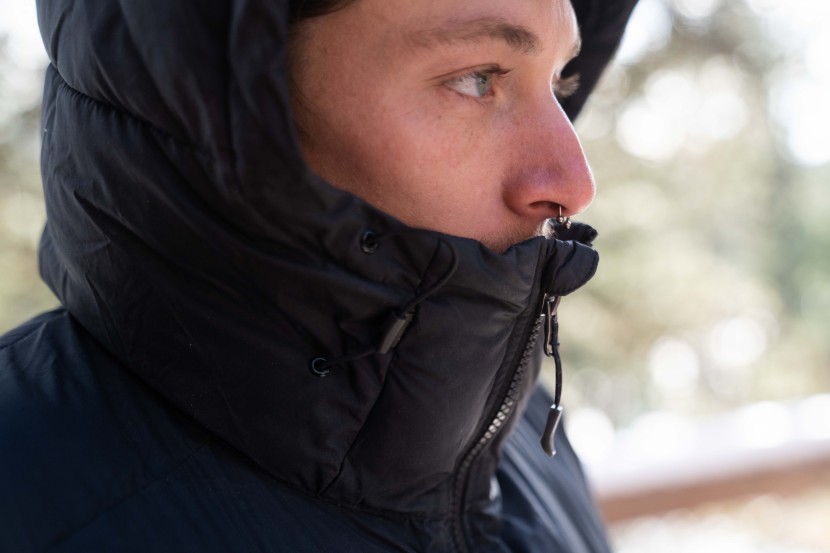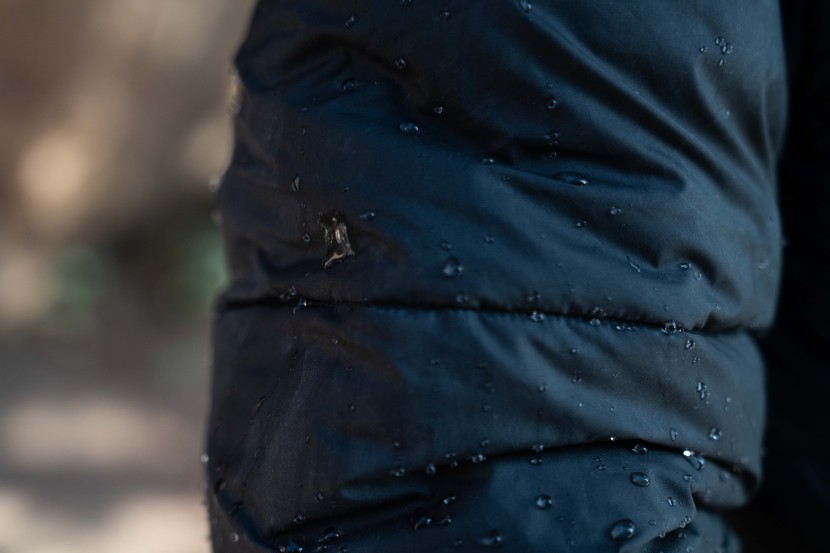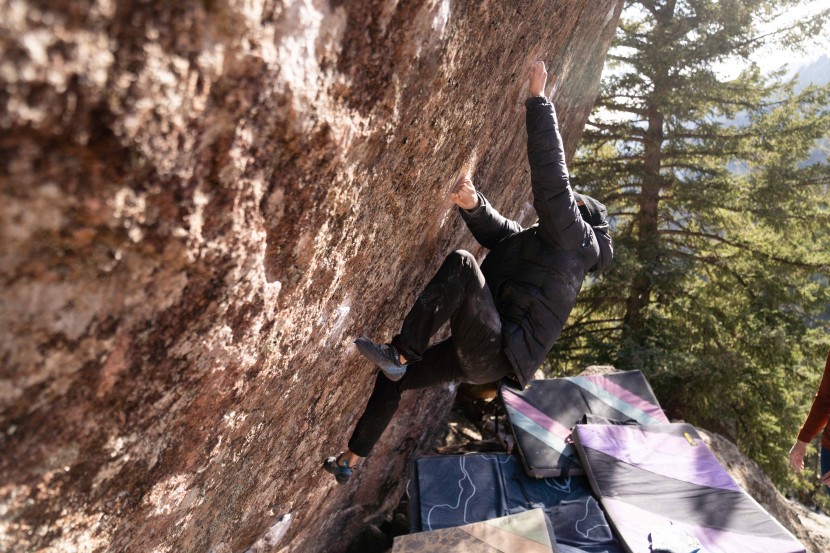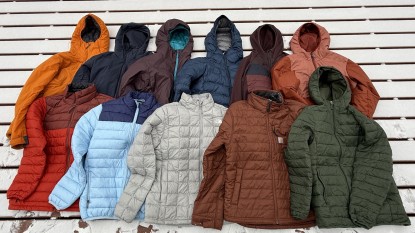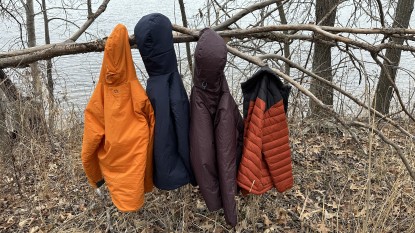Our Verdict
Our Analysis and Test Results
Intended as a jacket for snowy walks, the Columbia Pike Lake uses Thermarator insulation and the Omni-Heat liner to trap heat. The two zippered handwarmer pockets and the internal zipper pocket provide ample storage. The well-insulated hood features a velcro adjustment on the back and two drawcords on the sides, and the bottom hem also uses a drawcord so you can cinch it tight to keep out cold air. These features greatly help with the jacket's warmth, though they do less for the garment's breathability. However, this piece isn't intended to be worn when you're working up a sweat, and it accomplishes its task of sealing in warmth quite well.
Warmth
As one of the warmest jackets in this review, the Columbia Pike Lake provided a ton of heat in the cold. Its basic features—a drawcord at the hem, elasticized and velcro adjustment on the cuffs, and drawcord cinches on the hood—trap heat. These features helped close up the jacket and prevent any wind from permeating.
Columbia also used their Omni-Heat Reflective thermal lining, which reflects heat and helps with breathability. While we experienced less of the latter trait in the jacket, we did notice that the reflective liner did help trap a little more warmth.
Weight and Compressibility
This is not a lightweight jacket. Our size medium weighed in at 38.59 ounces, making it one of the heaviest jackets in the review. With all that weight comes bulk, too. It certainly won't stuff into a pocket, and there is no included stuff sack. Compared to the lightweight midlayers we tested, the Pike Lake sometimes felt more like a sleeping bag than a jacket. This isn't a piece you buy for its packability.
Comfort
Our testers liked the heaviness of the jacket as it felt like a warm and cozy sleeping bag. The insulated hood fits well, hugging our faces. The Omni-Heat lining with its little silver reflective dots felt a little odd against the skin, but ultimately our testers didn't mind it.
While moving, the jacket's bulk got in the way. We tested this jacket while bouldering outdoors on a cold day, and its heaviness seemed to prevent us from climbing at our best. But, that's not what it's designed for. Columbia intended this jacket to be more of a warm wear piece than an activewear jacket, so don't expect a ton of mobility out of it.
Weather Resistance
The Columbia Pike Lake fared decently well in terms of its weather resistance due in part to the thickness of the jacket. Made from Columbia's Storm-Lite DP II polyester material, the water-resistant shell did a reasonable job of keeping our testers dry and letting precipitation bead off the jacket. Its thickness also helped, as it took a significant amount of water to truly soak through it. The synthetic insulation also helped keep our testers warm, even when it got wet.
The Pike Lake has a few features like elasticized and velcro adjustment on the cuffs and drawcord cinches on the hood and hemline that help keep the wind from whipping into the piece, which was nice on cold and blustery hikes in the Flatirons outside of Boulder, Colorado.
Breathability
The Columbia Pike Lake is far from a breathable performance piece. Its heaviness prevents hot interior moisture from moving out quickly. We'd definitely recommend this piece for running errands or light neighborhood dog walks on cold winter days, but if you're looking for a performance-oriented insulating layer for activities where you plan to work up a sweat, other jackets in the review will do infinitely better.
Should You Buy the Columbia Pike Lake?
This slightly heavy piece works best for casual hiking or strolling around town on cold days. The poor breathability meant it was better for stationary use or when we weren't super active, but the level of warmth it provided was unmatched. It's a heavy winter jacket offered at an affordable price, and if you just need a good value for a quality winter jacket, this is a great option.
What Other Insulated Jackets Should You Consider?
The Columbia Pike Lake performed exceptionally well in terms of its warmth. If you want something warm but more packable and weather resistant, take a look at the Patagonia DAS Light Hoody. If you want a lighter, more technical version of this jacket, try the Mountain Hardwear Compressor Hoody or the Rab Nebula Pro.


